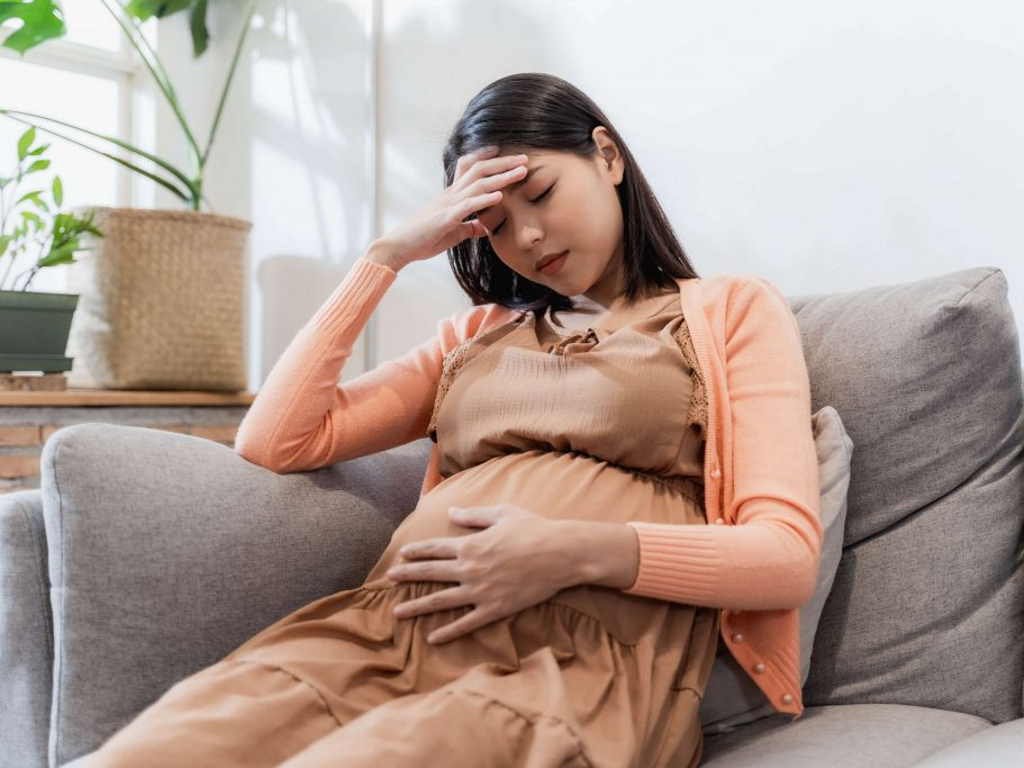Hemorrhoids During pregnancy, Causes, Treatment & Prevention
What Are Hemorrhoids?
Hemorrhoids are swollen veins located in or around your anus. They can manifest externally on your anus (external hemorrhoids) or internally within your rectum, the part of the large intestine leading to your anus (internal hemorrhoids). Regardless of their location, hemorrhoids are a common discomfort during pregnancy. The reassuring news is that they are typically manageable through home remedies and often resolve after childbirth.
Is It Normal to Have Hemorrhoids During Pregnancy?
Absolutely. If you’re pregnant and experiencing hemorrhoids, rest assured, you’re not alone. Hemorrhoids are a common occurrence during pregnancy, particularly in the third trimester and for up to a month after giving birth. Around 30% to 40% of pregnant individuals encounter hemorrhoids.
Hemorrhoids and Varicose Veins
Surprisingly, hemorrhoids and varicose veins share similarities. Many women, particularly those in their third trimester of pregnancy, experience both conditions.
Both hemorrhoids and varicose veins involve swollen and twisted veins, typically occurring in the legs. However, when these veins develop in the rectum, they are termed hemorrhoids.

What Causes Hemorrhoids in Pregnancy?
Hemorrhoids during pregnancy are a common occurrence, typically attributed to these contributing factors.
- Increased Blood Volume: The expansion of blood volume during pregnancy can lead to vein enlargement.
- Pressure from the Growing Baby: As the baby grows, it exerts pressure on the large blood vessels in the pelvis, potentially altering blood flow.
- Hormonal Changes: Pregnancy-induced hormonal shifts can affect blood vessels, causing reduced blood return to the heart and swelling in the smaller veins of the pelvis and legs.
- Constipation: Pushing or straining, especially due to constipation, can exacerbate hemorrhoids. Pre-existing obesity and a history of hemorrhoids prior to pregnancy may also contribute to their worsening. Straining during childbirth can further aggravate the condition.
- Additionally, there is often a familial tendency for hemorrhoids, and extended periods of sitting or standing may strain veins, leading to swelling.
Symptoms of Hemorrhoids during Pregnancy?
While it’s possible to have hemorrhoids without any noticeable symptoms, if symptoms do arise during pregnancy, they might encompass:
- Pain during bowel movements.
- Itching in and around the anal area. External hemorrhoids can be painful or itchy and may bleed when irritated due to straining or wiping.
- Intense Discomfort resulting from an internal hemorrhoid protruding outside the anus (prolapsed hemorrhoid).
- Presence of blood in the toilet bowl, on the stool, or on toilet paper following a bowel movement (typically associated with internal hemorrhoids).
Observing blood in your stool can be unsettling, but rest assured, rectal bleeding stemming from an internal hemorrhoid is typically benign. Nonetheless, if you’re pregnant and notice any bleeding, it’s advisable to seek guidance from your healthcare provider.
Diagnosing Hemorrhoids in Pregnancy
Hemorrhoids during pregnancy are so prevalent that your healthcare provider can often identify them based on your descriptions of symptoms. However, for confirmation, your provider might:
- Inspect your anus: External hemorrhoids are usually visible.
- Perform a digital rectal exam: This involves your provider gently inserting a gloved finger into your rectum to assess for internal hemorrhoids.
- Conduct an anoscopy or sigmoidoscopy: These straightforward procedures enable your provider to visually examine the interior of your rectum.
While these diagnostic measures may not sound pleasant, they’re generally more uncomfortable than painful. There’s no need for embarrassment as this is a routine aspect of healthcare.
Distinguishing Hemorrhoids from Anal Fissures
Hemorrhoids are characterized by swollen veins in your anus, while anal fissures are small tears in the lining of your anus. Although distinct conditions, they share commonality in occurrence during pregnancy and similar symptoms. Both hemorrhoids and anal fissures can provoke itching or pain and may result in bleeding, which can be noticed in your stools or when wiping after using the toilet. This bleeding is generally harmless. Nevertheless, if you’re pregnant and observe blood in your stool, it’s advisable to reach out to your healthcare provider for confirmation that the cause is indeed hemorrhoids or an anal fissure rather than a more concerning issue.
Treating Hemorrhoids in Pregnancy
While hemorrhoids during pregnancy are usually a temporary concern that tends to resolve after childbirth, there are steps you can take to alleviate discomfort:
- Sitz Baths: To relieve pain, take sitz baths several times a day in warm, plain water for approximately 10 minutes per session. Ensure the water level in the tub is sufficient to immerse the affected area, as this will promote better blood flow to your rectum.
- Cold Compresses: Reduce swelling by applying ice packs or cold compresses.
- Medical Advice: Consult your doctor about safe creams or medications, including stool softeners, that can be used during pregnancy.
- Dietary Changes: Prevent constipation by increasing your fiber and fluid intake.
- Avoid Straining: Minimize straining during bowel movements and avoid prolonged sitting. Engaging in regular Kegel exercises, which target the muscles in the vaginal and rectal areas, can help improve muscle tone.
- Medications : If intolerable hemorrhoids are linked to constipation, your healthcare provider may recommend a laxative, hemorrhoid cream, or fiber supplement. It’s essential to consult your provider before using any over-the-counter medications to ensure safety and effectiveness during pregnancy. Your provider is the most reliable source for guiding your treatment choices.
Remember, if your symptoms worsen or you experience excessive bleeding from hemorrhoids, consult your doctor. These conditions are usually temporary and tend to improve post-delivery with time and appropriate treatment.
For varicose veins associated with pregnancy, follow these guidelines:
- Avoid Prolonged Standing or Sitting: Take breaks and refrain from extended periods of sitting or standing.
- Elevate Your Legs: Whenever possible, elevate your legs and feet when sitting or lying down.
- Avoid Tight Clothing: Refrain from wearing tight clothing around your waist, thighs, and legs, as this can exacerbate varicose veins.
How to Prevent Hemorrhoids During Pregnancy ?
The best approach to preventing hemorrhoids during pregnancy is to minimize the risk of constipation. Avoid straining during bowel movements if you are constipated. Practicing the following steps can help:
- Stay Active: Avoid prolonged periods of standing or sitting still.
- Elevate Your Feet: Whenever feasible, elevate your legs and feet.
- Opt for Comfortable Clothing: Choose loose-fitting clothing that doesn’t constrict your waist, thighs, or legs.
In summary, hemorrhoids are swollen and twisted veins that, when found in the rectum, are referred to as hemorrhoids. Several normal pregnancy-related changes can elevate the risk of developing hemorrhoids. While these conditions are typically short-term and improve after childbirth, you can take steps to alleviate discomfort and prevent their occurrence by managing constipation.




